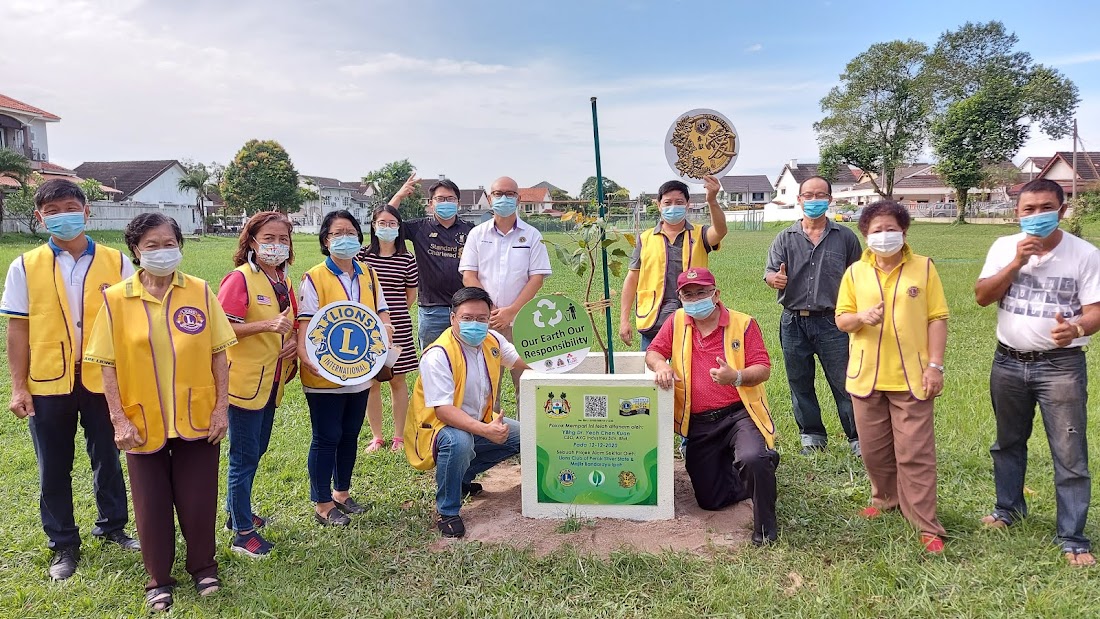By FOONG THIM LENG
Photos courtesy of CHEANG KUM SENG
 Photographer Cheang Kum Seng’s love affair with the limestone hills of the Kinta Valley has yielded thousands of photos spanning two decades.
Photographer Cheang Kum Seng’s love affair with the limestone hills of the Kinta Valley has yielded thousands of photos spanning two decades.RENOWNED photographer Cheang Kum Seng hopes to instil awareness on the importance of conserving the hills of the Kinta Valley through the images he has captured in the past two decades.
His fascinating photographs of the valley’s hills, caves and landscape were published recently in a book called Limestone Hills & Caves of the Kinta Valley. The author of the book is Ipoh-born freelance writer S. L. Wong, who specialises in environmental and travel writing.
 Serene pursuit: Boating in the lake near Pencil Rock in Tambun.
Serene pursuit: Boating in the lake near Pencil Rock in Tambun.Cheang, 65, is a retired bank employee who has found a second career as an industrial and commercial photographer. His images have appeared in numerous magazines, newspapers and books, and have been used regularly on the cover of the Malaysian Nature Society’s (MNS) Malaysian Naturalist between 1995 and 2000.
Cheang has snapped thousands of photographs of the hills in the Kinta Valley and some of his favourites are featured in the book. Many of the photographs were taken between 1990 and 1991 when he was commissioned as a photographer for the Kinta Valley Limestone Hill Survey Project by the MNS and as the photographer for the Gua Tempurung project by Heritage Acres Sdn Bhd.
“The photographs in the book depict not only existing hills and caves but also landscapes that no longer exist due to development and changes in the use of land. I hope the book will serve as an encouragement for all of us to stand up and protect Malaysia’s natural heritage,” Cheang said in an interview.
His photographs are a testament to his passion for nature and the patience needed to bring out the very best in his subjects. Most of Cheang’s photographs were taken before digital photography became popular. He used two 35mm and a 120mm camera for taking slides and negatives during his outings.
Cheang’s crew were usually made up of his three sons and MNS members who shared his interest in caving activities.
 The second chamber in Perak Tong, a cave temple near Tasek.
The second chamber in Perak Tong, a cave temple near Tasek.“We would visit the hills in the morning to start exploring the caves to look for interesting sites with unique features. It was a time-consuming job as we were only using torches. You need lots of patience to be able to study the formations before you are able to capture the images.
“Once we had identified our target, we would set up the cameras and positioned the helpers to light up the cave using multiple flashes. At times, we had to wait for rays of sunlight to seep through the cave ceiling to impart a surreal impact on the photographs.
“We could only take about two shots in each outing and had to leave the cave in the evening,” he recalled.
Cheang, an associate of the Royal Photography Society of Great Britain, has been a member of the MNS since 1992 and a member of the Malaysian Karst Society since 2002.
Photographer Cheang Kum Seng has immortalised the landscapes of the Kinta Valley.
MNS president Datuk Seri Dr Salleh Mohd Nor said in the book’s foreword that the Kinta Valley Hills have immeasurable conservation value and would be a perfect candidate for a World Heritage Site. It is significant in terms of its features and richness in biological diversity, but more significantly, it has a fascinating prehistoric past, he said.
Dr Salleh said that the Kinta Valley Hills, reputed to be between 240 and 570 million years old, are breathtaking limestone formations that have inspired many a traveller and researcher. With Limestone Hills & Caves of the Kinta Valley, the unique features of the limestone hills and caves can be recorded for posterity, for future generations to appreciate, he said.
Prof Dr Bernard Pierson, Shell Chair in Petroleum Geosciences, Universiti Teknologi Petronas, said the beautiful and long overdue book was a tribute to the geological treasures of the Kinta Valley.
Those interested in the book can contact the MNS at (03) 2287 9422.






